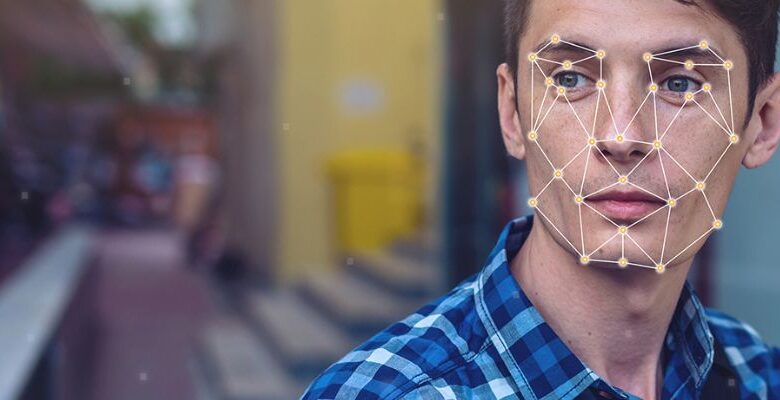Exploring the Impact of Facial Recognition Systems on Modern Security

Face recognition technology has transformed the ways we protect vulnerable areas, verify identities, and connect using digital devices. These systems, based on biometric facial recognition, are now essential in a variety of sectors, such as finance, police as well as health devices. This article will look at the use of facial recognition to confirm identities and ensure recognition, in addition to how they function the applications they support the companies behind them, and their security implications at present.
What Is a Facial Recognition System?
It is a technology for facial recognition that was developed to verify or verify the identity of an individual by examining the distinct aspects of their facial appearance. In contrast to the traditional methods of identification like the use of passwords or physical identification that require physical IDs biometric facial recognition could be a method of identifying that relies on physical recognition. Biometric face recognition makes use of facial images to confirm the identity of a person by looking at physical features like the shape of the face the cheekbones’ distance and the look that the eyes possess.
The system can record photos or videos of an individual processing the image. It can then be examined it against the Faceprint database, which is basically an image of the faces of individuals. This allows the system to recognize facial features to prove or deny the authenticity of a person by studying facial features.
How Does a Facial Recognition System Work?
An HTML0 Facial Recognition System can perform many important steps:
- Photograph capture: The initial step is to record videos or photos showing the faces of a person by using cameras or sensors. The quality and quality of a picture is vital to an exhaustive research.
- Face detection This system detects facial features and distinguishes them from an image. It makes use of algorithms to identify facial features, such as lips, eyes, noses, and even the eyes.
- Software designed: to recognize facial features determines distinctive characteristics of facial features, such as the distance between eyes, the jawline’s contour, and also the face shape the face adopts. These features can be used in order to create”faceprint. “faceprint,” which is a representation abstract of your face.
- Matching: The Matching of Faces Matching This Facial Matching face recognition biometrics match the faceprint to the database of faces recognized to determine if the image is an actual match. If the faceprint is identical to an entry in the database that is already in existence, it can verify that the person who is in the picture is indeed the person they claim to be.
- authentication: When there is an authenticating match, it will confirm who the person is who is granted access to restricted areas and even providing services such as unlocking your phone, or providing access to users in restricted areas.
What Is Biometric Face Recognition?
Face recognition using biometrics is an effective form of biometric authentication, which utilizes facial characteristics to verify or establish the identity of an individual. Contrary to traditional biometric methods such as fingerprints and iris scans facial recognition methods are dependent on the facial features of the individual. Face features allows for it to be a more simple and secure method to confirm the authenticity of a person.
Face recognition technologies that are biometrics is often used in security applications as they can accurately recognize people even in crowded areas or in public spaces. Since the last few years, biometric systems for facial recognition have been becoming more popular due to their convenience and their superior security.
Who Introduced Facial Recognition Systems?
The idea that you could utilize HTML0 to aid in recognizing faces was first introduced in the 1960s but it wasn’t until the 1990s that the technology started to receive more interest. The first systems for recognizing faces were developed around the end of 90 in the final decade during the late 1990s. Woodrow W. Bledsoe, a Computer scientist who utilized mathematic techniques to analyze facial characteristics, and later attempted to connect them with databases.
It wasn’t until the second quarter of the 1990s and at the start of the 2000s the technology for facial recognition became completely developed thanks to advances in digital photography, machine learning and computer vision. This led to the creation of a more precise and effective system to ensure security. Automated facial recognition technology made it possible for users to identify individuals quickly in a variety of locations including airports, shopping malls and shopping malls.
Facial Recognition System Applications in Security
The widespread use in the field of Facial Recognition technologies has led to substantial improvements in security over the last few years. Here are a few of the most sought-after features:
1. Public Safety and Law Enforcement
A single of the largest applications of biometrics to facial recognition is within police departments. Police departments around the world are increasingly using technology that recognize faces to examine cases, identify suspects, and locate missing persons. The ability to examine the details of facial features of surveillance videos and databases of criminals will speed up the investigation process and increase the effectiveness of the criminal prevention system.
News regarding face recognition typically includes instances where the technology was able to aid in the pursuit of criminals or solving crimes that are typically complicated.
2. Access Control and Authentication
Many commercial and government agencies utilize biometric devices that rely on facial recognition to restrict access to employees. From unlocking laptops and smartphones as well as protecting physical spaces like airports and offices. They offer greater security without passwords, keys or PINs.
The face recognition technology that is becoming more prevalent in businesses, banks as well as government agencies provide a fast and simple method of verifying that the person who is being questioned is who the person claims to be in addition to limiting access to areas that are considered sensitive.
3. Retail and Customer Experience
In the retail business, the application technologies for facial recognition can be used to improve the customer experience. Certain shops have adopted technology for facial recognition which monitors the habits of their customers with regard on their looks. This allows retailers to tailor discounts and promotions, or offer suggestions.
The requirement for fingerprint-based facial recognition technology for transactions in retail has led to some controversy with regard to privacy concerns. However, it is gaining popularity across the globe because of its potential to improve customer service and increase sales.
4. Banking and Finance
In the realm of finance, biometric systems that can recognize facial features are utilized to safeguard transactions as well as access to accounts. Banks are employing Biometric systems that recognize facial features to verify the identity of their customers when they log into their accounts online, or use ATMs to make transaction. This is an added layer of protection since facial recognition technology is able to verify identities faster and more accurately than conventional PIN codes.
5. Smart Homes
The application of facial recognition for intelligent home appliances is growing in popularity. Security appliances for houses include, for instance, advanced software that allows facial recognition to gain access to doors, as well as various areas. They also notify homeowners of any suspicions that someone can’t be identified.
Facial Recognition System Companies
A lot of companies concentrate on the design and development of facial recognition technologies that allow facial recognition. The most well-known companies who are experts in the field of facial recognition technology are:
- NEC Corporation Tis he pioneer of biometric systems that allow facial recognition. NEC develops and implements innovative security solutions for airports, banks, and other government agencies around the globe.
- FacePlus The company offers highly precise facial recognition software that is that are used in a variety of industries, including retail, banking security, banking and security.
- Clearview AI: Clearview is well-known due to its controversial facial recognition program, which is used by police departments. The software utilized by Clearview scrapes public images from social media sites in order to create a database that will permit searches based on facial recognition.
Advantages of Facial Recognition Systems
technology that identify faces offer a variety of benefits for modern protection
1. Improved Security
Its capability to identify faces is the best method of ensuring an exact security level and reducing the risk of access being unauthorized. In contrast to PIN codes and passwords which are easily lost or stolen, facial recognition capabilities are distinct and difficult for anyone to copy.
2. Convenience
The ability to verify the identity of an individual just by examining their appearance is an ideal option for both individuals as well as businesses. Software for facial recognition will provide quick and simple identification, which can enhance the user experience.
3. Scalability
It’s a bright outlook for HTML0. When facial recognition technology gets more efficient and advanced it will soon be able to adapt to large crowds. From airport security or monitoring large crowds during sporting events The facial recognition technology can handle massive amounts of data without sacrificing efficiency.
The Future of Facial Recognition Systems in Security
Although capabilities of Face Recognition continue to improve and develop They are expected to remain a part of our daily lives. The rapid advancements of AI as well as machine-learning may improve the accuracy and reliability they provide which will make them more efficient in recognizing people in various settings.
The increasing use for facial recognition technologies may also raise privacy concerns and the protection of personal data. As technology improves it is vital that there are laws and regulations put in place that ensure facial recognition technology are used in a responsible and an appropriate manner.
Conclusion
The HTML0 facial recognition system is a revolutionary technology used today in the security field. It’s fast, precise and accurate, it’s becoming an indispensable tool in many different industries like law enforcement, banking and retail, and healthcare. As technology improves and advances, it will be integrated into many aspects of our lives and help secure systems become more reliable, efficient, and easy to integrate to our digital and physical worlds.
Although facial recognition technologies based on biometrics have many benefits, it is crucial to take into consideration the privacy benefits with ethical issues. A sound use of ethics, strict guidelines on the use of information, and continuous technological advances can ensure that the use of technology to recognize faces will be used to improve security without jeopardizing rights of civil society.




